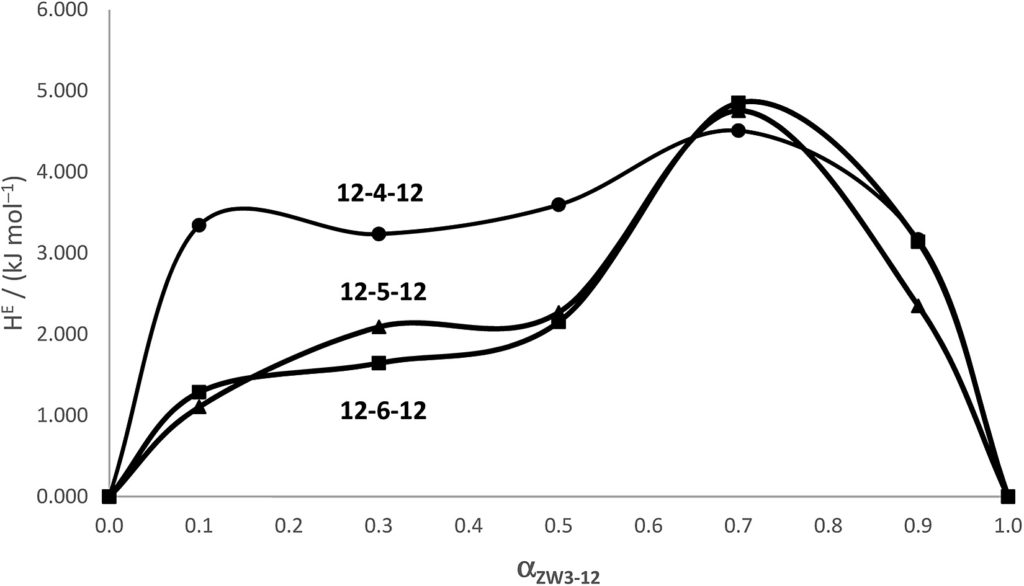Meet the Author
 We are very pleased to introduce Gerrard Marangoni, corresponding author of the paper ‘m-s-m cationic gemini and zwitterionic surfactants – a thermodynamic analysis of their mixed micelle formation‘ with Aleisha McLachlan, Kulbir Singh, Michael McAlduff, Samantha Shortall and Shawn D. Wettig. His article has been very well received and handpicked by our reviewers and handling editors as one of our HOT articles.
We are very pleased to introduce Gerrard Marangoni, corresponding author of the paper ‘m-s-m cationic gemini and zwitterionic surfactants – a thermodynamic analysis of their mixed micelle formation‘ with Aleisha McLachlan, Kulbir Singh, Michael McAlduff, Samantha Shortall and Shawn D. Wettig. His article has been very well received and handpicked by our reviewers and handling editors as one of our HOT articles.
Gerrard was kind enough to tell us more about the work that went into this article and what he hopes to achieve in the future. You can find out more about Gerrard and his article below and find more HOT articles in our online collection.
Dr. Gerrard Marangoni is a Professor of Chemistry at St. Francis Xavier University in Antigonish, Nova Scotia, Canada. He began his research career in colloid science as an undergraduate and graduate student; he subsequently worked with Atomic Energy of Canada Limited on the thermodynamics of radioactive compounds, and since 1992 has been at StFX University in the Department of Chemistry studying self-assembly of amphiphilic compounds. He has over 25 years of experience in surfactant and colloidal chemistry, a number of highly cited publications, and is a named author on close to 100 research papers, reports, patents and patent applications. Dr. Marangoni is a co-founder of two startup companies a member of several scientific advisory committees.
Could you briefly explain the focus of your article to the non-specialist (in one or two sentences only) and why it is of current interest?
Mixed surfactants systems are important in a number of commercial applications – understanding how they interact on a molecular level is a first step to learning how to improve their performance.
How big an impact could your results potentially have?
For gemini surfactants, researchers are keenly aware of the contribution of the spacer groups towards their self-assembly – we now also appreciate that it can play a significant role in the self-assembly of mixed surfactants system with gemini and other surfactants.
Could you explain the motivation behind this study?
Synergism is often discussed from a thermodynamic standpoint, but rarely are the appropriate excess thermodynamic functions measured experimentally. From our previous investigation with these same systems, we observed some key differences in the synergistic effects due to a slight change in the length of the spacer group. We were eager to see how those differences (conclusions drawn from 2D NMR NOESY and conductivity experiments) showed up in the thermodynamic parameters of micelle formation; hence the calorimetry study.
In your opinion, what are the key design considerations for your study?
Calorimetric titration studies require careful attention to the design of each experiment with respect to concentration(s) of titrant, the size of each injection, and the number of injections. Poor design often results in a great deal of “trial and error” in order to obtain high quality thermodynamic/binding data.
Which part of the work towards this paper proved to be most challenging?
While our group has a great deal of experience with the calculation of the various thermodynamic parameters described in this work, the number of calculations involved, combined with the multiple thermodynamic models utilized make the calculations challenging.
What aspect of your work are you most excited about at the moment?
How well the results from the nmr experiments and calorimetry complemented each other!
What is the next step? What work is planned?
We are currently examining how the synergism extends to other key aspects and applications of surfactants (drug delivery, solubilization).
m-s-m cationic gemini and zwitterionic surfactants – a thermodynamic analysis of their mixed micelle formation
Aleisha McLachlan, Kulbir Singh, Michael McAlduff, D. Gerrard Marangoni, Samantha Shortall and Shawn D. Wettig
RSC Adv., 2020, 10, 3221-3232
DOI: 10.1039/C9RA09432F, Paper


Submit to RSC Advances today! Check out our author guidelines for information on our article types or find out more about the advantages of publishing in a Royal Society of Chemistry journal.
Keep up to date with our latest HOT articles, Reviews, Collections & more by following us on Twitter. You can also keep informed by signing up to our E-Alerts.










